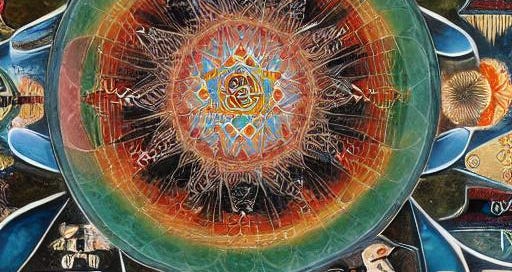Stage 3: Decoding the Characters in Your Dreams
The characters in your dream are not merely random creations of the sleeping mind but rather embodiments of various aspects of our own psyche. Learn how to understand their symbolic meaning
In Jungian theory, the characters in our dreams are seen as personifications of psychological complexes — clusters of emotionally charged ideas or experiences that are organised around a central archetypal core. These complexes can represent a wide range of personality traits, motivations, or even specific individuals in our lives who embody certain qualities.
The most well-known complexes, as identified by Freud and Jung, are the maternal and paternal complexes. However, any aspect of our personality, such as meticulousness, conscientiousness, or emotionality, can manifest as a complex and thus appear as a character in our dreams.
In essence, our psyche is like a grand theatre where these complexes play out their roles, with the ego serving as the actor, observer, or sometimes even the audience, while the Self acts as the conductor orchestrating the entire performance.
Identifying the Meaning of Dream Characters
To unravel the significance of a particular dream character, we must ask ourselves a series of questions:
What part of my personality does this character represent?
Where do I see this dynamic playing out in my waking life?
What specific trait or quality does this character embody?
If a character has a prototype in reality (i.e., a friend), what feelings or thoughts are connected to this person?
By answering these questions, we can begin to piece together the symbolic meaning of each figure and their role in the overall dream narrative.
it is important to remember that dream characters usually represent inner aspects of ourselves, rather than literal people in our lives. However, the characteristics or dynamics we associate with certain individuals can provide clues to the deeper psychological themes being expressed.
The Universal Archetypes: Persona, Shadow, Anima, and Animus
While any number of complexes can appear in our dreams, there are four universal archetypes that often play a central role: the Persona, the Shadow, the Anima, and the Animus.
The Persona represents the social masks we wear, the roles we play in different contexts of our lives. In dreams, issues with the Persona may manifest as clothing that feels inappropriate, uncomfortable, or missing altogether.
The Shadow embodies the repressed, denied, or undeveloped aspects of our personality. When Shadow figures appear in dreams, they often take the form of threatening or unpleasant characters. By confronting and integrating these Shadow elements, we move towards greater wholeness and authenticity.
The Anima (for men) and Animus (for women) represent our unconscious feminine and masculine qualities, respectively. They often appear as dream characters of the opposite sex, acting as guides or mediators to the inner world. The nature of these figures and their interactions with other characters can reveal important insights about our relationship patterns and psychological development.
The Interplay of Archetypes
Often, these archetypal characters will interact with each other within the dream narrative. For example, a maternal figure may be seen controlling or influencing a younger female character, suggesting a lack of differentiation between the Anima and the mother complex.
Similarly, a Shadow character may be holding captive or threatening the Anima or Animus figure, symbolising how unresolved Shadow elements can interfere with our ability to form authentic relationships.
By observing these character dynamics and their evolution over time, we gain a deeper understanding of our own psychological journey and the areas where we may need to focus our attention for growth and healing.
Integrative Approach
As we work with the characters in our dreams, it is important to approach the process with curiosity, openness, and self-compassion. Every figure, even the most troubling or unpleasant, has something valuable to teach us about ourselves.
Remember, the goal is not to eliminate or suppress any aspect of our psyche but rather to bring them into conscious awareness and integration. As we do so, we move closer to the ideal of the individuated Self — a state of wholeness, balance, and authentic self-expression.
So the next time you encounter a striking character in your dreams, take a moment to pause and reflect on what this figure might be trying to communicate.
Have a question? Ask in comments!




